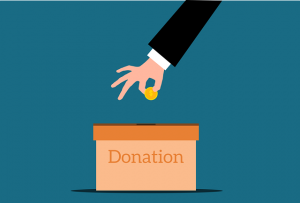When we think about wellness, most of us imagine big commitments. Maybe it’s a new gym routine, signing up for a meditation course, or changing our entire diet. While those larger steps can be transformative, they often feel overwhelming to start and even harder to maintain. What many people don’t realize is that real, lasting change often begins with the smallest of actions—what researchers are beginning to call microinterventions.
A microintervention is precisely what it sounds like: a tiny, intentional act that nudges your body or mind toward balance. Unlike big lifestyle overhauls, microinterventions are quick, sensory, and easy to weave into your everyday life. You don’t need an hour of free time or expensive equipment—just a willingness to notice small opportunities throughout your day.
Why Small Changes Work Better Than Big Overhauls
The human brain loves consistency, but it resists drastic change. Anyone who has made a New Year’s resolution to transform their health knows how quickly willpower fades. That’s because large, sweeping goals can trigger resistance and stress. In contrast, microinterventions are almost invisible to the willpower meter—they’re so easy and light that the brain doesn’t resist them. A splash of cold water on your face to reset your focus. A few shoulder rolls after long hours at a desk. A brief pause to stretch while the kettle boils. These moments don’t require scheduling, equipment, or perfection. Over time, they accumulate, nudging your body and mind toward better balance.
This idea of layering small actions also aligns with the way people approach weight and health in more structured ways. Some individuals combine sensory-based wellness practices with nutrition guidance, physical activity, or even medical interventions. For instance, if someone is considering different types of weight loss medications, it’s often most effective when paired with mindful rituals that make everyday living feel supportive of their larger goals. The point isn’t to replace one with the other but to see how small daily rituals can complement broader wellness strategies.
Simple Sensory Microinterventions
The beauty of microinterventions is that they’re highly personal. What works for one person may not work for another, and that’s okay. The goal isn’t to follow a strict formula but to experiment with tiny acts that bring you back into alignment with your body and mind.
Here are some easy, sensory-driven ideas to try:
- Scent resets. Keep a citrus or peppermint essential oil near your workspace. When you feel foggy, take a deep inhale. Scent can spark alertness and focus almost instantly.
- Grounding touch. Rub your palms together briskly until they feel warm, then place them over your eyes. This simple act relaxes facial muscles and signals your nervous system to soften.
- Visual cues. Place a sticky note with a grounding word—like “breathe” or “stretch”—somewhere you’ll see it often. Let the sight of that word be your reminder to pause.
- Mini sound baths. Close your eyes and listen to a short clip of ocean waves, rain, or birdsong. A minute or two is enough to calm your heart rate and ease mental chatter.
- Taste rituals. Before eating, take one small mindful bite. Notice the texture, the flavor, the temperature. That moment of presence helps slow you down and brings more satisfaction to meals.
Each of these takes less than a minute, but the ripple effect is much larger. Imagine how your day shifts when you sprinkle it with 5-10 of these tiny rituals. Over time, they create a baseline of steadiness that makes it easier to face bigger challenges.
Microinterventions for Energy and Focus
One of the biggest struggles many people face is managing energy. Fatigue, distraction, and stress tend to pile up, leaving us drained before the day is even halfway through. This is where microinterventions come in, acting like small recharging stations throughout the day. For example, stepping outside for just two or three minutes in the morning exposes you to natural light, which resets your circadian rhythm and signals your body to wake up. During the day, every time you refill your water glass, you can add a quick 20-second stretch—these tiny resets help your muscles and circulation stay active.
And when the afternoon slump hits, instead of forcing yourself to power through, pausing for a simple 60-second breathing exercise—inhale for four counts, exhale for six—can leave you clearer and calmer. These practices may seem insignificant, but our nervous system doesn’t measure the size of the action, only the signal it receives. Even one stretch or mindful breath can be enough to reset your mental state.
Microinterventions for Emotional Balance
Wellness isn’t just about the body; it’s also about emotional well-being. Microinterventions can help us respond to emotions with gentleness instead of reactivity.
- Cooling breath. When irritation rises, inhale gently through pursed lips as if sipping through a straw. This naturally cools and slows the breath, calming your response.
- Hand on heart. Place your palm on your chest and feel your heartbeat. This simple gesture increases feelings of safety and connection.
- Gratitude glance. Pick one item in your environment—a photo, a plant, even a favorite mug—and pause to appreciate it. The act of noticing softens stress.
Emotional balance doesn’t come from ignoring feelings but from meeting them with micro-moments of care.
Pairing Microinterventions With Larger Goals
While microinterventions are powerful on their own, they become especially effective when paired with larger wellness goals. For instance, a quick stretch before lacing up your sneakers can make it easier to start a workout, while a mindful sip of water before meals helps reinforce healthier eating habits. For those following a weight-loss plan, even one that includes medication, these small rituals provide a supportive environment that fosters consistency and emotional resilience. The key is not to view microinterventions as replacements for bigger commitments, but as gentle bridges that make those commitments feel more sustainable over time.
The Big Impact of Small Things
Microinterventions remind us that well-being is always just a moment away. By pausing, sensing, and noticing, we teach our nervous system to return to balance. And when that balance becomes our baseline, everything else—our energy, emotions, relationships, and even long-term health goals—begins to align. The next time you feel overwhelmed by the idea of “getting healthy,” remember this: you don’t need to change your whole life overnight. You just need to start with one small act of presence. And then another. And another. Over time, those micro-moments add up to a life that feels lighter, steadier, and more your own.






